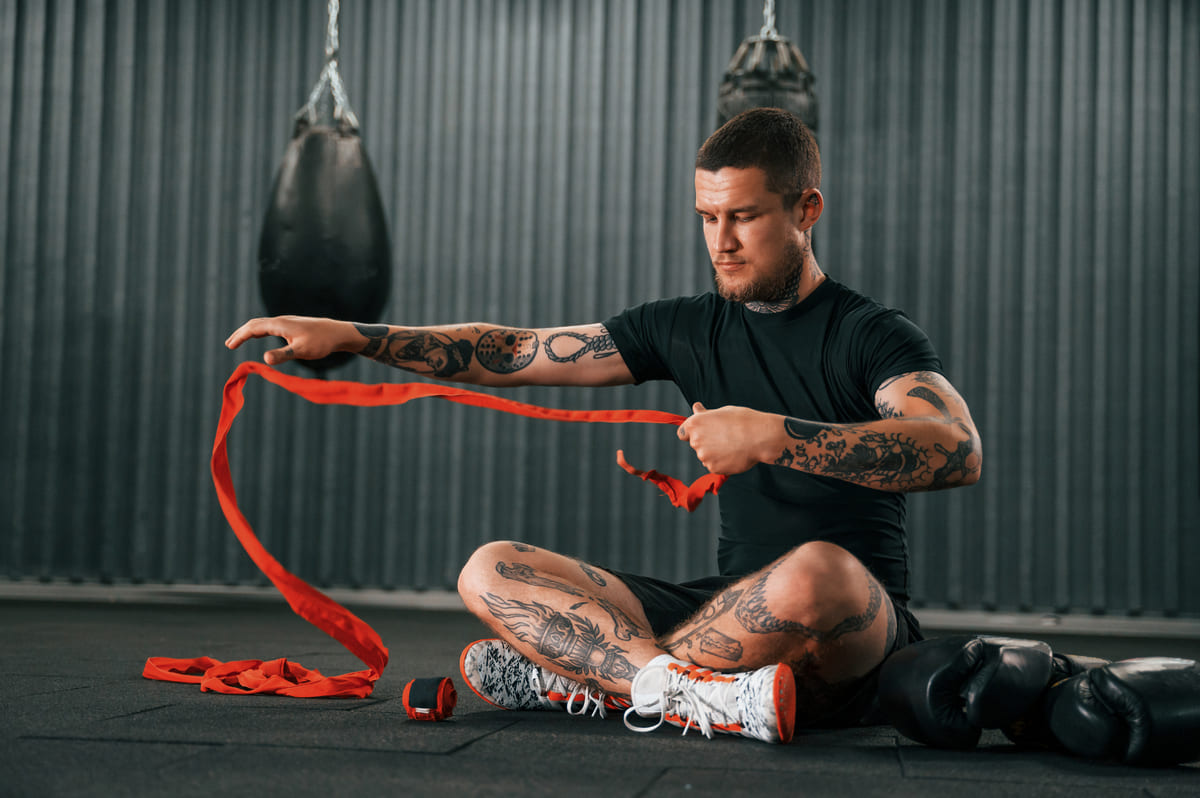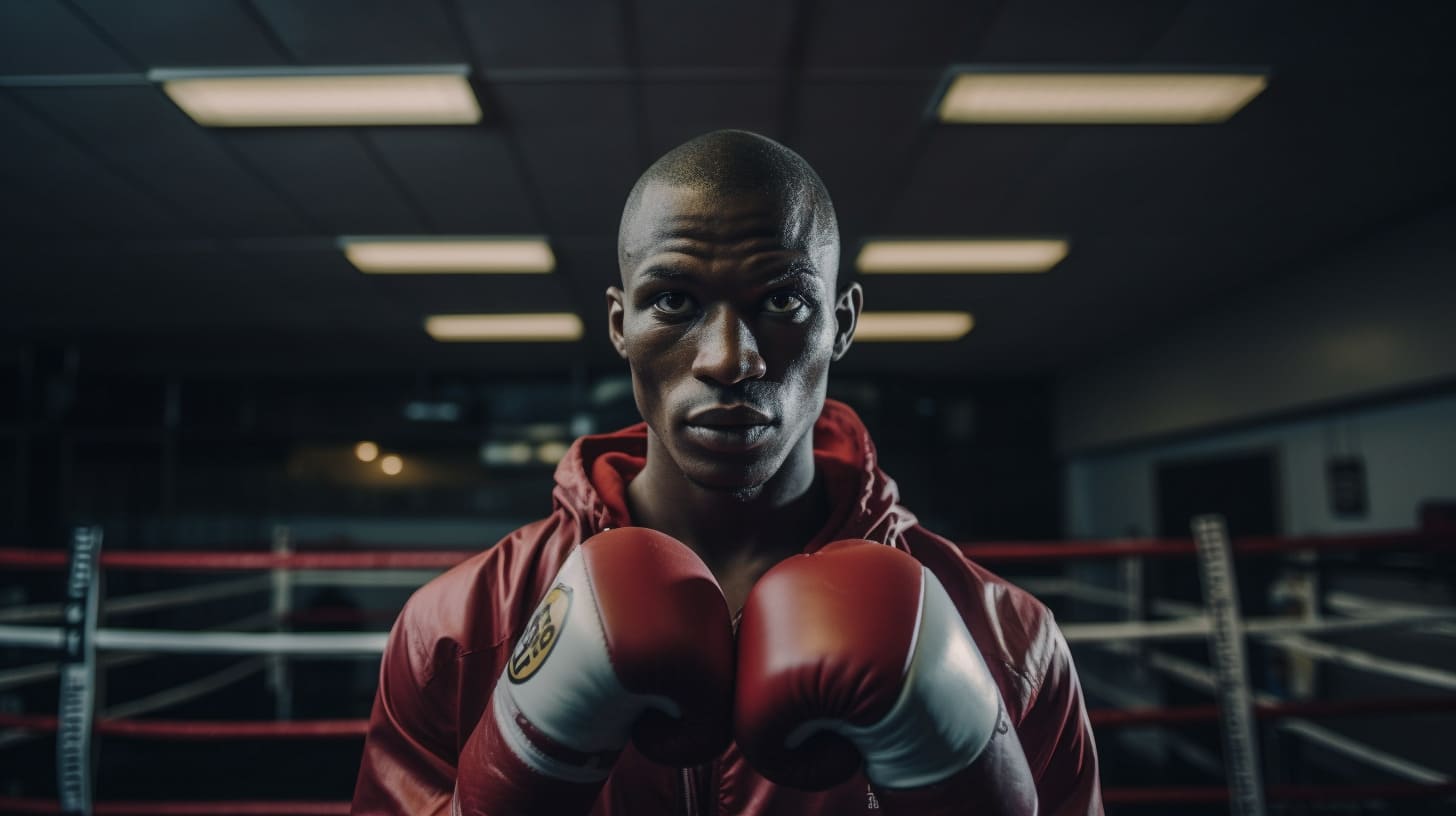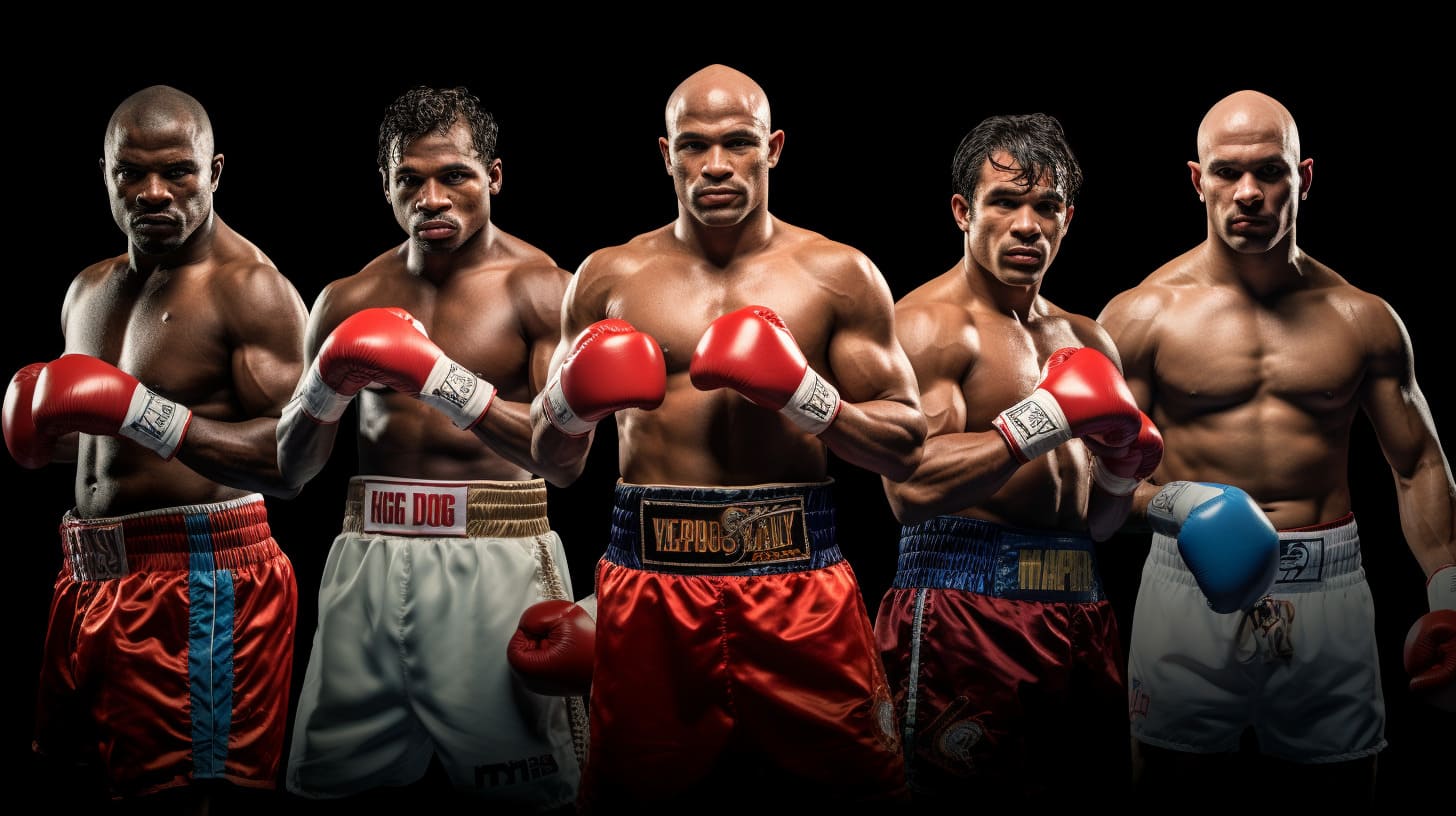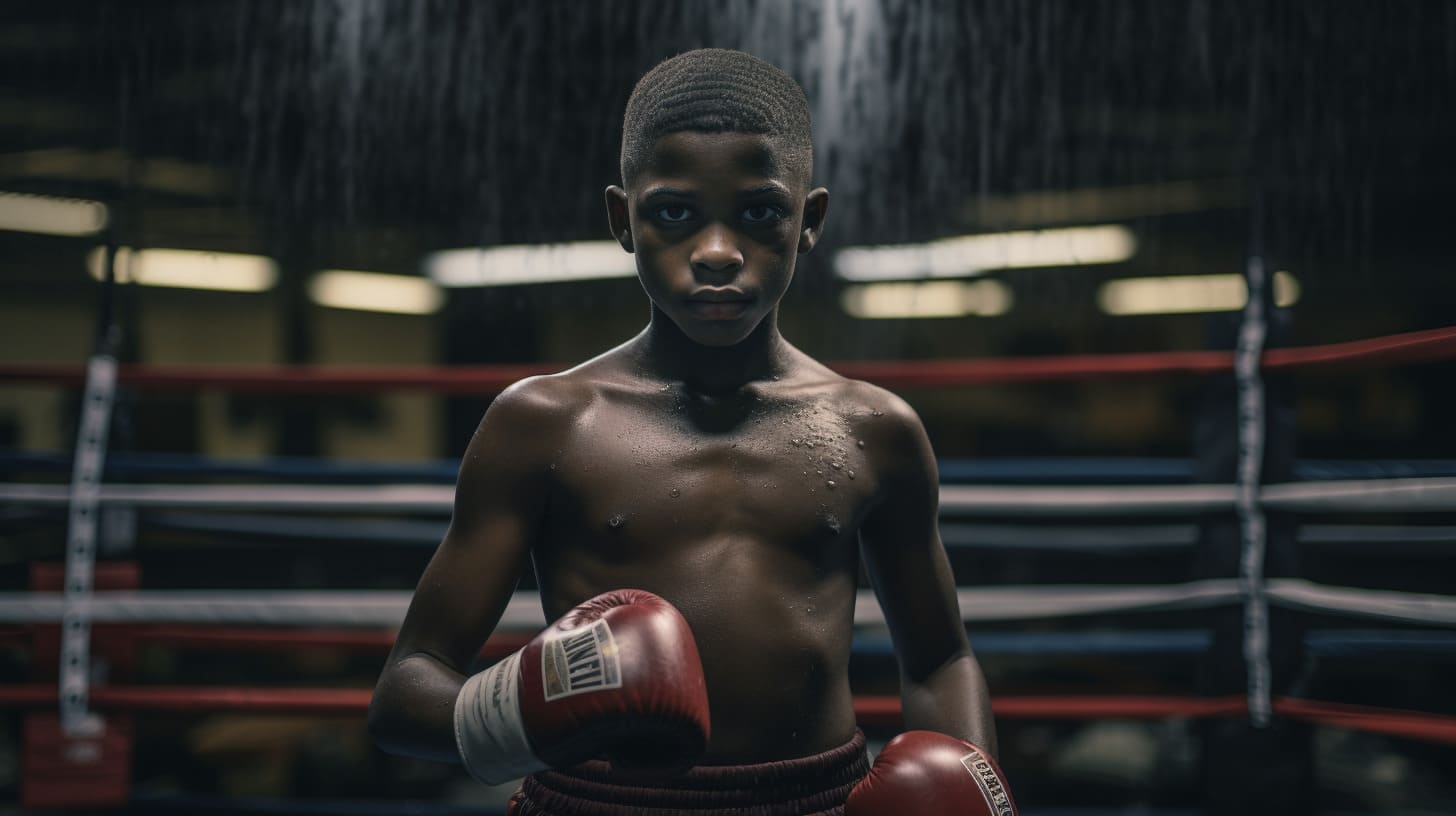The Boxing Aspirant’s Mindset
Embarking on a boxing journey is much more than just a physical endeavor—it’s a mental challenge that demands a sturdy foundation of the right attitudes and beliefs. Before you lace up your gloves and step into the ring, understanding the mental landscape of boxing is crucial. This chapter will unpack the vital mental preparation needed and elucidate the significance of patience and persistence in your boxing voyage.
Mental Preparation
They say the battleground of an athlete is foremost in the mind. In boxing, this rings especially true. Your mental preparation lays the cornerstone for every jab, hook, and uppercut you’ll deliver or dodge. Here’s a breakdown of the key aspects:

- Understanding Your Why: Knowing your motivation behind taking up boxing is a guiding light. It fuels your drive and helps you stay committed during tough times.
- Setting Realistic Goals: Whether it’s mastering a particular combo, improving your footwork, or winning a local tournament, setting achievable goals keeps you focused and progressing.
- Visualization: Mental rehearsal of your techniques, strategies, and the desired outcome of your fights can significantly enhance your performance.
- Stress Management: Boxing is a high-stress sport. Learning how to manage anxiety and nervousness before and during a bout is crucial.
- Continuous Learning: Embracing a learner’s mindset and being open to feedback and adjustments will keep you evolving and improving.
Did you ever dream about boxing?
Dreams about boxing can be intense and emotionally charged, often reflecting our inner battles, struggles, and the fight for survival or achievement.
The Importance of Patience and Persistence
Boxing is a long-haul journey, not a sprint. It demands a blend of patience and persistence that can often feel antithetical to the urgent fervor of combat sports. Yet, these virtues are indispensable for any aspirant eyeing mastery in boxing.

- Patience: Boxing skills are honed over time with meticulous practice. Being patient allows you to learn at a pace that cements your skills deeply and ensures you’re building on a solid foundation.
- Persistence: The road is laden with challenges, setbacks, and defeats. Persistence is your unwavering ally in overcoming these hurdles and continually striving towards your goals.
- Combining Patience and Persistence: Together, patience and persistence create a potent combo. They equip you with the fortitude to stay the course, improving bit by bit, fight by fight.
The boxing ring is as much a test of mental mettle as it is of physical prowess. Cultivating a resilient, patient, and persistent mindset is pivotal for anyone looking to not just navigate but thrive in the demanding world of boxing.
Building a Solid Foundation: The Boxing Basics
Every aspiring boxer must traverse through the rudimentaries before leaping into advanced techniques and strategies. This chapter is dedicated to illuminating the fundamental boxing skills that form the bedrock of a promising boxing journey. Furthermore, we’ll delve into the importance of honing these basics to perfection, establishing a solid foundation that will serve you well as you advance in your boxing exploits.
Mastering the Basics of boxing
Boxing basics are the ABCs of the sport. They provide the framework within which all advanced skills and strategies are built. Let’s unravel the key basic skills every boxer should master:

- Stance and Balance:
- Your stance is the base from which all boxing techniques are executed. A proper stance ensures balance, power, and protection.
- Balance enables you to move smoothly, maintain stability while punching, and quickly recover to a defensive position.
- Footwork:
- Good footwork is crucial for both offense and defense. It allows for quick advancements, smooth retreats, and lateral movements to evade punches.
- Jab:
- The jab is the most basic yet versatile punch in boxing. It’s used to gauge distance, set up combinations, and keep opponents at bay.
- Straight Right/Left (Cross):
- The cross is a straight punch thrown from the back hand, known for its power. It’s essential for building strong offensive combinations.
- Hook:
- The hook is a powerful punch thrown in a circular motion. Mastering the hook adds a significant tool to your offensive arsenal.
- Uppercut:
- The uppercut is a vertical punch that can be devastating when landed correctly. It’s often used in close-quarter combat to target the opponent’s chin or body.
- Defense (Blocking, Slipping, and Parrying):
- Defense is equally, if not more, important than offense. Learning how to block, slip, and parry punches is fundamental for any boxer.
The Significance of a Solid Foundation
A robust foundation in these basics is non-negotiable for anyone serious about boxing. Here’s why:
- Skill Enhancement:
-
- Mastering the basics opens the door to learning advanced techniques and strategies. It acts as a springboard for your boxing skill set.
- In-Ring Confidence:
- Being proficient in the basics boosts your confidence in the ring. You’ll have a reliable set of skills to fall back on in challenging situations.
- Long-term Progression:
- A solid foundation ensures that your progress is built on firm ground. It aids in the longevity and sustainability of your boxing career.
- Preventing Bad Habits:
- Learning the basics correctly from the outset prevents the development of bad habits that can be detrimental down the line.
- Adaptability:
- A strong grasp of the basics enhances your ability to adapt to different fighting styles and strategies as you encounter diverse opponents.
Boxing isn’t merely about who can throw the hardest punch. It’s a meticulous blend of technique, strategy, and physical conditioning. The sooner you cement your understanding and execution of the basic skills, the faster you’ll find yourself advancing and evolving in the sweet science that is boxing.
The Timeline to Proficiency: A Closer Look

Getting good at boxing is a marathon, not a sprint. The timeline to proficiency varies widely among different individuals, reflecting the multifaceted nature of boxing training. In this chapter, we’ll explore various factors influencing the rate of progression and provide a realistic expectation of the journey that lies ahead.
Factors Influencing Progression
A multitude of factors come into play when gauging the timeline to becoming adept at boxing. Understanding these will help set realistic goals and maintain a healthy perspective on your boxing journey.
-
Personal Aptitude:
- Everyone has a unique learning curve. Your natural athleticism, coordination, and physical fitness can significantly impact how quickly you grasp boxing fundamentals.
-
Training Frequency:
- The more time you dedicate to training, the quicker you’re likely to see progress. Consistency is key to steady improvement.
-
Quality of Coaching:
- The guidance of knowledgeable and experienced coaches can drastically accelerate your learning process.
-
Sparring Experience:
- Sparring is where theory meets practice. It’s a crucial component of training that enhances your understanding and application of boxing techniques in real-time scenarios.
-
Mental Toughness:
- Boxing is as much a mental game as it is physical. Your ability to stay focused, learn from setbacks, and maintain a positive attitude significantly influences your rate of progression.
Expected Timeline to become good at boxing
Here’s a generalized timeline based on the collective experiences of many boxers:
- 0-6 Months:
- Grasping the Fundamentals: Learning the basic stances, punches, and defensive moves. Building physical conditioning.
- 6-12 Months:
- Applying Basics in Sparring: Begin sparring sessions to apply what you’ve learned in a practical setting.
- 1-2 Years:
- Intermediate Proficiency: Developing a decent level of proficiency, where you start feeling comfortable sparring and maybe participating in amateur bouts.
- 2+ Years:
- Advanced Skillset: Honing advanced techniques, building a unique fighting style, and gaining a wealth of experience through sparring and competitions.
Embracing the Journey
-
Patience is a Virtue:
- Progress in boxing often comes in ebbs and flows. Embracing the process, celebrating small victories, and learning from setbacks is crucial for long-term development.
-
Continuous Learning:
- The learning never stops in boxing. Every training session, sparring match, and competition provides valuable lessons that contribute to your overall boxing acumen.
-
Feedback and Adjustment:
- Regular feedback from coaches and self-analysis of your performances will help identify areas for improvement and adjust your training regime accordingly.
Boxing is a complex and demanding sport that requires a blend of physical conditioning, technical skill, and mental fortitude. The journey to becoming proficient is long and challenging, yet immensely rewarding for those who stay committed and embrace the learning process.
The road of Tyson fury
Tyson Fury, also known as the Gypsy King. His story is a blend of ups and downs, both inside and outside the ring, making his achievements all the more noteworthy. His lineage, personal battles, and triumphant comeback have all been beautifully chronicled in a detailed article on our platform. For an in-depth look into how the Gypsy King’s past has shaped his illustrious boxing career, make sure to check out The boxing history of Tyson Fury. This article sheds light on how historical and personal battles shaped the formidable boxer we see today. It’s a riveting read for anyone interested in the intricate tapestry of factors that propel individuals to greatness in the boxing world.
The Sweat and the Glory: The Physical Demands of Boxing
The old adage, “no pain, no gain,” rings particularly true in the realm of boxing. The journey to becoming adept in the ring is a rigorous one, loaded with intense training regimes, meticulous skill refinement, and an unyielding commitment to physical fitness. In this chapter, we’ll delve into what it takes physically to shape a novice into a seasoned boxer, ready to face the onslaught of punches with grace.
Grueling Training Regimes
Boxing is not for the faint of heart. The training regimes are demanding, designed to push you to your limits and then some more. A typical training day might include:
- Cardiovascular Training: Running, skipping, and other heart-pounding activities are the core of building the stamina needed to last in the ring.
- Strength Training: Lifting weights, resistance training to build the muscle strength necessary to deliver powerful punches.
- Technical Training: Hours spent with the punching bag, practicing combinations, improving footwork, and honing defensive skills.
- Sparring: Engaging with a partner to simulate real boxing scenarios, an essential component for understanding the dynamics of a real fight.
Skill Refinement
Mastering the art of boxing isn’t merely about brute strength; it’s an elegant dance where technique is king. Refining your skills is a daily endeavor:
- Punching Technique: Perfecting the jab, hook, uppercut, and other boxing staples to ensure each hit lands with precision and power.
- Defensive Maneuvers: Mastering the art of ducking, dodging, and blocking to minimize damage and keep you in the fight longer.
- Footwork: A boxer’s mobility is his best defense and a solid foundation for offense. Hours are spent developing nimble and effective footwork.
Physical Fitness and Nutrition
The significance of a well-rounded fitness regime and balanced nutrition cannot be overstated:
- Diet: A well-balanced diet, rich in proteins, healthy fats, and carbohydrates, fuels the body for intensive training and recovery.
- Conditioning Exercises: These keep the body’s core strong, supporting the rigorous physical demands of boxing.
- Recovery: Adequate rest and recovery are as vital as the training itself, aiding in muscle recovery, and preparing the body for the next round of training.
The journey towards boxing proficiency is a blend of blood, sweat, tears, and an unwavering dedication to the sport. The physical demands are strenuous, but the glory on the other side of the hardship is well worth the sacrifice.
Conclusion: It’s More Than Just Throwing Punches
Embarking on the journey to becoming proficient in boxing is a commitment that extends beyond the physical realm. The road is long, and it’s paved with sweat, determination, and an unyielding resolve to improve with each passing day. Whether you’re lacing up the gloves for the first time or stepping into the ring for your hundredth bout, the quest for improvement is a constant companion.
In this comprehensive guide, we’ve navigated through the time frames you might expect on your boxing voyage, delved into the mental furnace where the indomitable spirit of a boxer is forged, and discussed the essence of sparring and its place in honing your boxing skills. The anecdotes from seasoned boxers and the statistical insights serve as both a roadmap and a source of motivation.
Boxing is not just a sport, but a crucible where character is tested and tempered. The lessons learned within the four ropes of a boxing ring echo through all facets of life. The patience to persist, the humility to learn, and the courage to face fears are virtues sown on the canvas of the boxing gym.
As you lace up your gloves and step into the boxing odyssey, remember, every champion was once a contender who refused to give up. The path to prowess in boxing is as much about mastering the self as it is about mastering the sport. And while the journey may be grueling, the rewards are boundless.
Now, with a deeper understanding of what lies ahead, you’re better equipped to embrace the rigors and revel in the rewards that the sweet science of boxing generously offers. Your boxing journey is a unique narrative in the making, with every training session, every sparring round, and every bout, a sentence in the captivating story of your pugilistic pursuit. So, keep jabbing, keep learning, and keep pushing the boundaries of what you thought possible. The ring is unforgiving, but it’s also a grand stage where legends are born and legacies are etched in the annals of boxing history.
Take this knowledge, lace up, step into the ring, and start carving your own legacy in the world of boxing.
FAQ’s
What is the average time to become proficient in boxing?
On average, it takes about 1 to 2 years of consistent training for someone to become proficient in boxing, depending on their dedication, physical condition, and learning pace.
Does previous athletic experience affect how quickly one can excel in boxing?
Yes, individuals with prior athletic experience, especially in sports requiring similar physical attributes and skills, may find it easier to pick up boxing techniques and excel faster.
What factors influence the time it takes to get good at boxing?
Factors include the frequency and intensity of training, quality of coaching, physical fitness, and natural aptitude for the sport. Personal commitment and mental toughness also play significant roles.
How often should one train to improve quickly in boxing?
To improve quickly, it's recommended to train at least 3-4 times per week, focusing on technique, strength, conditioning, and sparring under professional guidance.
Can attending boxing classes accelerate the learning process?
Attending boxing classes can be highly beneficial, as they provide structured training, expert guidance, and the opportunity to spar with different partners, all of which can accelerate learning.
Is age a factor in how quickly you can get good at boxing?
While younger individuals may learn and adapt faster due to natural agility and endurance, age is not a definitive factor. With proper training and dedication, individuals of all ages can excel in boxing.
What are key milestones in becoming good at boxing?
Key milestones include mastering basic techniques (like jabs and hooks), developing defensive skills, improving footwork, building stamina and strength, and gaining confidence in sparring sessions.

